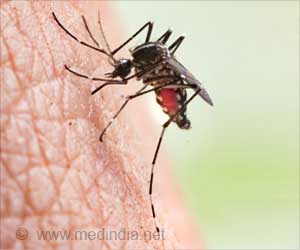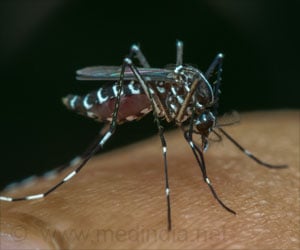Scientists have revealed the genetic secrets of the filarial parasites that cause elephantiasis.
Scientists have revealed the genetic secrets of the filarial parasites that cause elephantiasis. Filarial parasites have affected more than 150 million people worldwide. Filaria is a long, thread-like worm that can live for years inside the human body and cause severe, debilitating diseases such as elephantiasis.
The larvae of these parasitic nematodes is spread from human to human by mosquitoes placing at risk more than a billion people who live in places in Africa, Asia and Latin America where filarial parasites thrive at large.Now, a team of researchers funded by the National Institute of Allergy and Infectious Diseases (NIAID), one of the National Institutes of Health (NIH), has revealed the genetic secrets of one of these parasites. In the September 21, 2007 issue of Science, the researchers report solving the complete genome of Brugia malayi, one of the worms that causes the often debilitating disease elephantiasis. The World Health Organization (WHO) estimates that more than 40 million people around the world are seriously incapacitated and disfigured by elephantiasis. The WHO also estimates that about half a million people around the world have lost their vision due to onchocerciasis, or river blindness, which is caused by another type of filarial parasite.
“Filarial diseases are treatable, but the current treatments were discovered decades ago,” says NIAID Director Anthony S. Fauci, M.D. “There is an urgent need for new discoveries in this area because of the limitations of the current drugs, including toxicities and the development of resistance.” The B. malayi genome reveals dozens of potential new targets for drugs or vaccines and should provide new opportunities for understanding, treating and preventing elephantiasis and similar diseases.
“Having a complete genetic blueprint gives us a better understanding of what genes are important for different processes so you can target them more specifically,” says Elodie Ghedin, Ph.D., who led the sequencing project while at the Institute for Genomic Research, now part of the J. Craig Venter Institute, a not-for-profit research organization based in Rockville, Maryland. Dr. Ghedin is now a professor at the University of Pittsburgh School of Medicine.
When a mosquito bites someone infected with B. malayi, it ingests microscopic worms that develop into infectious larvae. These larvae are then deposited onto the skin of the next person bitten. Once the parasites penetrate the skin, they wend their way to the body’s lymphatic system—a network of fine vessels and organs that drains fluid from the body’s tissues and plays a key role in coordinating the immune response by concentrating immune cells in the lymph nodes. Male and female worms cluster, intertwining in the draining vessels just below the lymph nodes, and mate. A fertile female may produce 1,000 or more larvae a day and grow to be three or four inches long.
This filarial union can cause severe disease. Because they most often position themselves in front of vessels draining liquid from the lymph nodes, the worms can effectively obstruct the drainage. This causes the surrounding tissues to fill with fluid and swell to elephantine proportions.
Advertisements
Female B. malayi worms can live up to eight years in the human body. This longevity complicates elephantiasis treatment because existing drugs for treating the disease target the larvae only and do not completely kill the adult worms. The drugs often must be taken for years, and the worms can cause massive immune reactions when they die, releasing foreign molecules in the body.
Advertisements
Understanding how this particular parasite has adapted to humans may yield medical benefits far beyond those places where elephantiasis is common, according to collaborator Alan L. Scott, Ph.D., of the Bloomberg School of Public Health at Johns Hopkins University. Worms can be viewed as foreign tissue transplanted into the human body. But unlike baboon hearts or pig kidneys, which the immune system quickly rejects, worms can survive for years in the body. Discovering how they do so may someday benefit transplant surgery, according to Dr. Scott.
Source-Eurekalert
SPH/C






